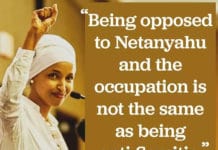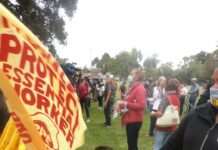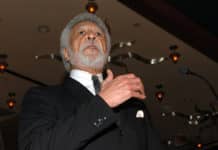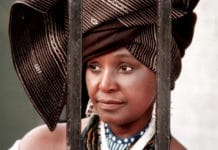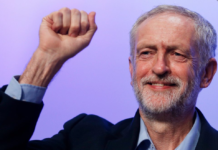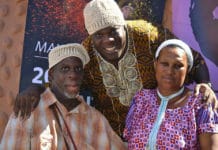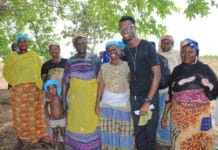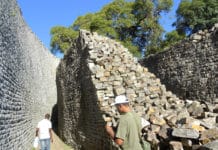Avatar’s Pandora: A modern day battle in the Congo
by Kambale Musavuli
“Avatar,” the highest-grossing film of all time, may be more real and current than the average person knows. The battle of Pandora is taking place right now in the Congo!
Since 1996 a war has been raging in the Congo to get access to resources vital for modern technology and global investors. Nearly 6 million Congolese have lost their lives, millions more have been displaced, hundreds of thousands of women have been systematically raped as a strategy of war, mass scale logging is taking place at an alarming rate in the second largest rainforest in the world and an $80 billion plan is being pursued by the World Energy Council to dam the river ostensibly to provide electricity to Europe while the people of the Congo are still in the dark.
All the while, there is a deafening silence within the international community about the root causes of this 14-year-old war waged in the heart of Africa.
Ann Hornaday, in her Dec. 18, 2009, article in the Washington Post delves into “Avatar”’s historical connection with the Congo as she shows how Joseph Conrad’s Marlow is the “Avatar” corollary of James Cameron’s Jake Sully. In Conrad’s “Heart of Darkness,” we see the dehumanizing description of Congo natives as “mostly black and naked, [moving] about like ants” and “black shapes” remarkably similar to Cameron’s “Avatar” label of “flea-bitten savages” and “blue monkeys.”
Using computer animation and 3-D technology, Cameron takes us into a virtual world where the characters maintain their humanness throughout this action-packed film. The three dimensional experience of “Avatar” places the audience inside the plot. They witness in real time the resource exploitation of indigenous land at the expense of local populations in the name of profit for corporations and investors.
Sunk into the special effects, ordinary people fail to realize how they are also complicit in destruction similar to that portrayed in the movie, and they leave the theater or their couch with one sentiment predominant in their minds: “This is a great movie!” Yet no global outrage nor action is seen for a worldwide mobilization campaign by viewers to stop the real-life current exploitation of the Congolese people.
This film creates space for a much needed dialogue about what we are doing to our planet Earth. It illustrates how interconnected humans are and touches on issues from the environment to spirituality. It lays bare the connection between the dehumanization of native people and corporate greed whereby profit takes priority over people.
To achieve their aim, corporations create chaos in order to access certain key resources at the expense of the indigenous people. “Avatar” addresses the most important of wars in the world today, yet it calls for a state of amnesia. Dots are left unconnected between the movie and what is happening right now in the heart of the African continent.
This is also the set of Congo’s plight. Congo is arguably the richest country on the planet in terms of natural resources. It is the storehouse of strategic and precious minerals that are vital to the functioning of modern society.
Its minerals are key to the consumer electronics, technology, automotive, aerospace and military industries. Its diamonds, gold, copper, cobalt, uranium, iron, tin, tungsten and coltan (the mineral that is central to the functioning of our cell phones, laptops and other technology and electronic devices) are coveted from China to the United States. Its rainforest, the second largest in the world after the Amazon, is vital to the fight against climate change as noted by the Sun Sentinel, while American companies such as The Blattner Group are cutting the trees down day by day in the name of profit.
This geopolitical and geostrategic battle to control Congo’s vast mineral wealth is devastating for the entire continent of Africa. Bordered by nine African countries, Congo straddles the Equator and is the fulcrum on which the entire continent swings. Whatever happens in the Congo affects the entire continent.
As foreign governments and multinationals fight to exploit Congo’s resources, a second holocaust in a century is taking place in Congo. Because of these resources, the Congolese people have faced distinct challenges since its modern founding in 1885 at the Berlin Conference when Congo was given to King Leopold II of Belgium as his own personal property.
A similar challenge transpired in the late 1800s when an estimated 10 million to 15 million Congolese lost their lives due to the world’s appetite for rubber and ivory. The difference in present-day Congo is that it is primarily U.S. allies Rwanda and Uganda who are carrying out the depopulation and control over Congolese land and resources.
The central question in the Congo, as in “Avatar,” is who is going to control the resources and for whose benefit? The answer to this question is evident in the very conflict that is the Congo – in the unsafe natural gas exploitation in Lake Kivu by American company Contour Global, mass displacement and environmental degradation of local indigenous people by Freeport McMoran, odious mining contracts by American companies such as OM Group or the illegal logging and massive exploitation of plantation workers by The Blattner Group, to name a few.
In the midst of all of this exploitation, there is a trait worth mentioning that demonstrate the resiliency and self-determination of the Congolese people. For more than 400 years, the Congolese have been fighting for sovereignty over their land. They have lost many leaders such as Kimpa Vita, who was burned at stake at age 21 with her infant son as she was accused of heresy by the Portuguese because she organized the people in the Kongo kingdom to fight for the sovereignty of the land. Another notable freedom fighter is Simon Kimbangu, who spent more years in prison fighting Belgian colonialism than Nelson Mandela did while fighting Apartheid.
Congo also saw the rise of Lumpungu II, who spoke out about sovereignty of the land and was hanged in front of his people by the king of Belgium. Congo’s first democratically elected prime minister, Patrice Lumumba, can never be forgotten, as he fought to retain Congo’s resources for the benefit of the Congolese people in particular and Africa in general. As a result of Lumumba’s stance, he was assassinated within months of taking office by Belgium in cahoots with the United States, other Western nations and local elites.
Congolese youth have initiated a worldwide mobilization campaign in partnership with young people around the world. The Jake Sullies of the Congo who have helped in the awakening of national consciousness for centuries have fortunately been Congolese. And though they have nearly all been brutally assassinated, the Congolese fight to control their own resources and determine their own affairs has not yet died.
The spirit that lives in the Congolese youth who continue to rise up for change in their nation is immortal. As self-determination in the rebuilding of their country runs through their veins, their ancestors’ history becomes a reminder of the struggle now waged for centuries.
Frantz Fanon says that each generation must find its destiny and, when found, either betray it or fulfill it. Congolese youth of today are fulfilling that destiny by breaking the silence both inside their country and globally.
Just as in Pandora, the battle of Congo is the battle of humanity, especially given Congo’s importance in the fight against climate change, its large fresh water reserves and mineral resources that are key to modern society. Being true agents of change, the youth are organizing events, winning the hearts and minds of people in their respective communities by sharing their personal stories and mobilizing support for Congolese on the ground.
Youth groups inside Congo are organizing film festivals in eastern Congo where the conflict is more acute. Others are also doing their part in the education of young Congolese through history teach-ins.
Today, in the Congo, there is a new breed of Avatars. The Congolese youth are playing that role, as they are scattered around the world in countries fueling the war in their home country. Their mission is different from that of Jake Sully. Theirs is to win the hearts and minds of the citizens of these nations to pressure their countries’ governments and corporations to stop the plunder of Congo’s resources.
With that diplomatic mission, we bear witness to a global movement in support of Congolese people energized by their youth in a quest to bring peace and stability to their home.
Ordinary people throughout the globe can play a critical role in bringing about change in the Congo. We all benefit from Congo’s wealth and have a responsibility to make sure we are not benefiting at the expense of the people.
We all benefit from Congo’s wealth and have a responsibility to make sure we are not benefiting at the expense of the people.
What is taking place in the Congo as we speak is a scar on the conscience of humanity. Congo’s problem is a worldwide problem; hence, it demands a global response. The global movement in support of the Congo is as important today as the free South Africa movement was yesterday. We all must get involved by demanding that our leaders make Congo a priority, hold our corporations accountable and support Congolese institutions fighting for peace, justice and human dignity.
As Fanon presciently noted, “Let us be sure never to forget it; the fate of all of us is at stake in the Congo.”
Kambale Musavuli is spokesperson and student coordinator for Friends of the Congo. He can be reached at kambale@friendsofthecongo.org.

 Store
Store




